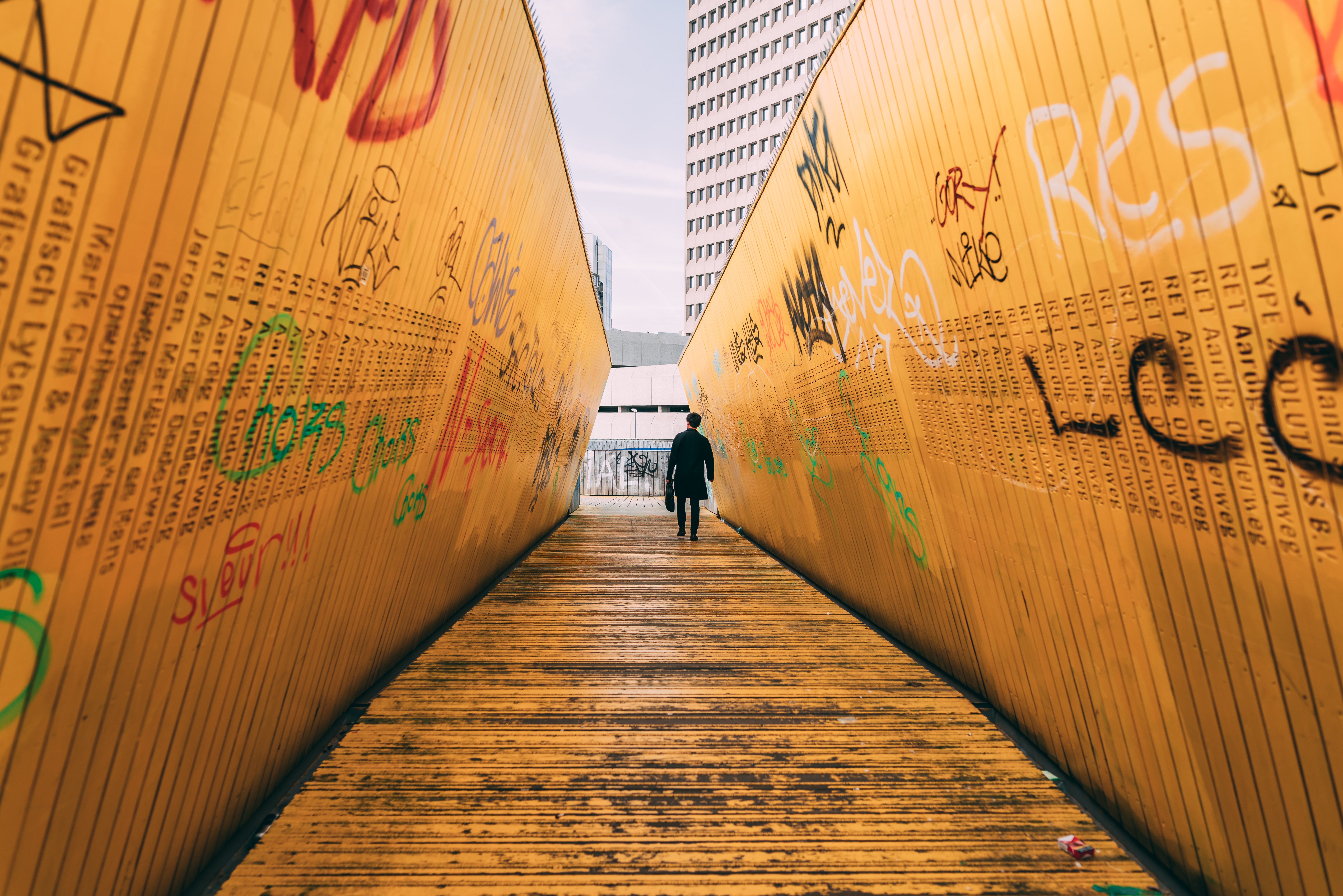Rotterdam is fighting climate change and poverty at the same time
Rotterdam sees an opportunity to boost resilience, adapt to climate change and address social and economic challenges in one of its most deprived districts.
I
n March 1943 more than 100 US bombers attacked the Dutch port of Rotterdam, which was then occupied by the Germans. Poor visibility and strong winds led to the residential area of Bospolder-Tussendijken, known as BoTu, being bombed by mistake, killing hundreds and leaving thousands homeless. Today, a park stands on the bomb site. Park 1943 serves a symbol of the district’s resilience and is a central feature of the city’s bold plan to tackle climate change and poverty at the same time.
Rotterdam is home to Europe’s largest port and plays a vital role as a hub for the continent’s international trade, but it sits below sea level. So city leaders are aware of the existential threat facing them without a climate adaptation strategy. They drafted the city’s first resilience strategy in 2016 and two years later they published a specific plan for BoTu. This emphasised not only climate adaptation but also social regeneration.
BoTu, a densely populated region on the north bank of Rotterdam’s river Nieuwe Maas, close to the port, grew rapidly in the first half of the 20th Century as different groups of migrant workers were drawn by cheap housing and demand for unskilled labour. Despite an urban renewal program in the 1970s, BoTu today remains among the Netherlands’ most deprived areas. It suffers from high crime and unemployment, and three-quarters of its households survive on low income.

A little more greenery wouldn’t hurt. Photo by Stijn Hanegraaf/Unsplash
Urban acupuncture
The city sees an opportunity to boost resilience, adapt to climate change and address BoTu’s social and economic challenges, all within one plan. Central to this is phasing out gas power in the district by 2030 and replacing it with electricity from renewables, such as wind and solar, and residual heat from the port. This will boost sustainability in BoTu, and will be followed by a further plan to make BoTu entirely CO2-free by 2050.
What’s unusual, however, is how this policy will be used to improve conditions in BoTu. For example, most of the area’s housing is dated, with poor insulation and inefficient heating, so part of the sustainability drive will involve building new housing and improving existing stock. This brings the opportunity to redesign urban spaces in ways that encourage community and promote culture and entrepreneurship.
Personal Architecture, a Rotterdam-based firm, says that different solutions are necessary in different parts of the district. Around Park 1943, where the effects of the bombing are still visible today, large-scale rebuilding will be necessary. In contrast, the Schans/Watergeus neighbourhood, will require only “urban acupuncture” – small-scale interventions “at the building level and in the public space” that can stimulate larger effects.
Engaging the community
The plan depends on getting the community on board. For example, the city has been adding water storage measures and more green space because BoTu is one of Rotterdam’s most-paved districts. Climate change adaptability will depend on greater water absorbance, to prevent flooding, and better storage of rainfall, which can be an important resource. However, BoTu’s first water plazas for storing rainwater were vandalised; the community did not value them or see how they were beneficial.
Go BoTu, a collective comprising doctors, health workers, teachers, local business people, community workers and others, has been concentrating on getting locals more involved. In this regard some aspects of the project will help to reinforce others.
For example, the workers replacing heating systems with more environmentally friendly alternatives will be trained to identify households with other needs, such as debt counseling or help with languages. Meanwhile, the work being done to extend green spaces will not only improve the environment but also stimulate community life, helping to build relationships. Park 1943, for example, now hosts a festival, sports fields and barbecuing facilities.
And because the local community will be consulted and involved throughout the process, the building and renovation work will create jobs for BoTu residents, which should further stimulate the local economy.
The plan is still at an early stage. Through the Rockefeller Foundation’s 100 Resilient Cities project, the city is consulting with peers in London and New York so that each can learn from the others.
BoTu’s resilience is not in doubt. The mere presence of Park 1943 is evidence that the area has survived challenging times. Now the community – and Rotterdam as a whole – could set an example for other cities across the globe to follow.
The ideas presented in this article aim to inspire adaptation action – they are the views of the author and do not necessarily reflect those of the Global Center on Adaptation.